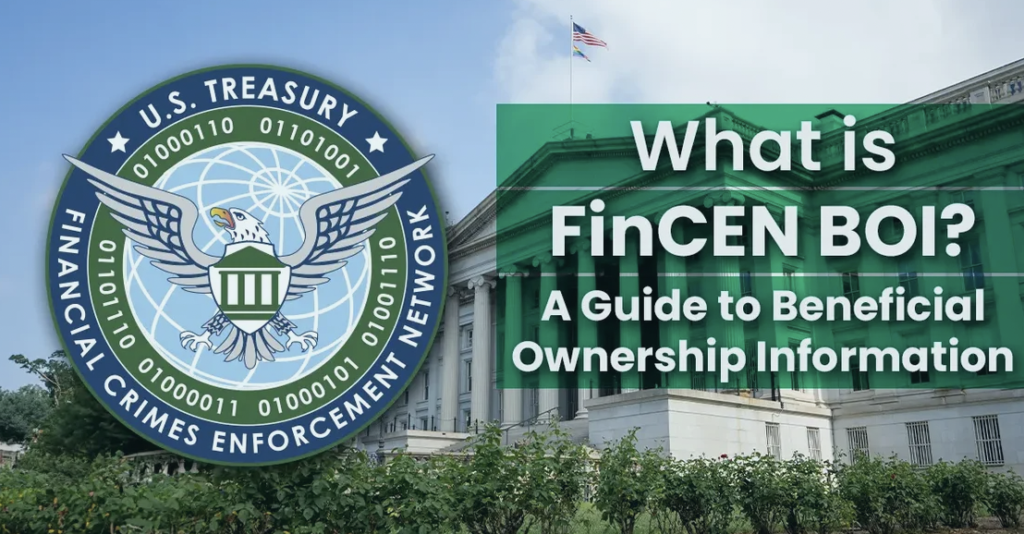Navigating the Corporate Transparency Act: What You Need to Know


In the realm of corporate governance and financial regulation, staying informed about new legislation is paramount. The recent enactment of the Corporate Transparency Act (CTA) in the United States has introduced significant changes that have far-reaching implications for businesses and individuals alike. In this article, we’ll delve into the key aspects of the CTA and its impact on corporate transparency and compliance.
Understanding the Corporate Transparency Act
The Corporate Transparency Act, enacted to combat financial crimes such as money laundering and terrorist financing, aims to enhance transparency by requiring certain entities to disclose their ultimate beneficial ownership (UBO) information to the Financial Crimes Enforcement Network (FinCEN). This crucial information includes details about individuals who ultimately own or control these entities, thereby increasing accountability and reducing anonymity in corporate structures.
Who Does the CTA Apply To?
The scope of the CTA covers a wide range of entities, including limited liability companies (LLCs), corporations (both C and S corporations), limited partnerships (LPs), and other closely held entities. It’s essential to note that certain exemptions exist, including charities, large companies, and common law trusts not formed through state filings. However, most businesses falling within the defined categories need to comply with the CTA’s requirements.
Key Reporting Requirements
Under the CTA, covered entities are obligated to file reports with FinCEN, disclosing UBO information such as names, addresses, dates of birth, and identification documents. Notably, the use of P.O. boxes or addresses of legal representatives is prohibited, ensuring greater transparency and accountability.
Defining Beneficial Ownership
Identifying beneficial owners is a critical aspect of CTA compliance. A beneficial owner is defined as someone with substantial control over the entity, owning 25% or more equity interests, or receiving significant economic benefits. Trusts serving as beneficial owners may need to disclose trustees or individuals with authority over trust assets, further elucidating ownership structures.
Ensuring Compliance and Consequences of Non-Compliance
Compliance with the CTA is imperative, as failure to adhere to its requirements can lead to severe penalties. Non-compliance may result in steep fines, ranging from $500 per day up to $10,000 per violation, and in some cases, individuals may face imprisonment for up to two years. Therefore, it’s crucial for affected entities to understand and fulfill their reporting obligations under the CTA.
Reporting Deadlines and Ongoing Requirements
Entities subject to the CTA must adhere to specific reporting deadlines. For newly created or registered companies on or after January 1, 2024, initial reports must be filed within 90 calendar days of creation. For entities formed after January 1, 2025, reports must be filed within 30 calendar days. Additionally, ongoing reporting is required only for changes in beneficial ownership, which must be reported within 30 days of occurrence.
Seeking Further Guidance
Navigating the intricacies of the Corporate Transparency Act can be daunting, but professional guidance is available to ensure compliance. If you’re unsure whether your company is subject to the CTA or need assistance with reporting requirements, consulting with legal and financial experts is highly recommended.
Conclusion
The Corporate Transparency Act represents a significant step towards enhancing transparency and combating financial crimes within the corporate landscape. By requiring entities to disclose their ultimate beneficial ownership information, the CTA aims to foster accountability and integrity in business dealings. As businesses adapt to comply with these new regulations, staying informed and seeking guidance will be essential in navigating the evolving regulatory landscape.
For more detailed information and resources regarding the Corporate Transparency Act, visit the Financial Crimes Enforcement Network (FinCEN) website at www.fincen.gov/boi/Reference-materials.
Remember, staying compliant not only mitigates legal risks but also contributes to a more transparent and trustworthy business environment.
Ken Koo – Partner
